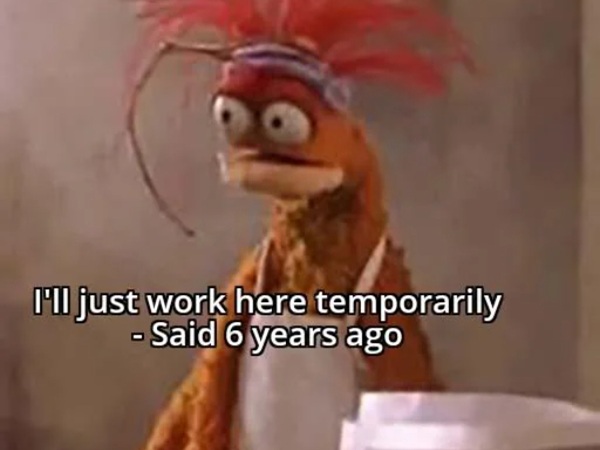Pricing Handmade Crafts: Strategies to Maximize Your Profit Margins

When pricing your handmade crafts, it’s crucial to understand your costs clearly. Start by calculating material and production expenses, along with labor and overhead costs. This foundational step helps you establish a baseline for your pricing strategy. Next, consider how much profit margin you want to include. This guide will walk you through these calculations and additionally address other key aspects, ensuring your pricing reflects both your efforts and market value effectively.
Key Takeaways

- Calculate total costs by summing material, labor, and overhead expenses to establish a clear pricing foundation.
- Determine a fair hourly wage for labor and track crafting time to accurately assess labor costs.
- Incorporate a profit margin of 8-30% to ensure business sustainability and profitability.
- Regularly review and adjust pricing based on market changes, material costs, and customer feedback.
- Use psychological pricing tactics, such as attractive packaging and perceived value, to enhance customer willingness to pay.
Understanding Your Costs

When you’re pricing your handmade crafts, comprehension of your costs is vital to ensuring your business thrives.
Start by accurately calculating your material costs, which means recording the total supply costs for each item, including every material used, even in fractional amounts. Don’t forget to include packaging expenses like hang tags.
Next, factor in labor costs by determining a fair hourly wage for the time spent crafting. It’s important to include overhead costs, such as utilities and rent, in your pricing calculations to avoid financial strain.
Combine all these expenses to determine your total costs. Regularly review and update these calculations, especially as market prices fluctuate, to keep your craft pricing competitive and sustainable.
Material and Production Costs

Accurately calculating material and production costs is crucial for setting the right price for your handmade crafts. Start by recording all expenses for materials used, including fractional amounts. Divide this total by the number of items produced to find the cost per unit.
Next, factor in your overhead costs, which include recurring expenses like utilities and supplies, by dividing the total monthly overhead by your estimated production. To find the total production cost, add your material costs, labor costs, and overhead costs together.
Remember to review and update these costs regularly to reflect market changes or improvements in efficiency. This guarantees you’re covering all business expenses and maintaining profitability in your crafting venture.
Labor Costs and Your Time

Labor costs play a significant role in pricing your handmade crafts, and comprehending how to calculate them can help guarantee you’re fairly compensated for your work. Start by tracking the actual time spent crafting each item, including setup and finishing touches. Determine a fair hourly wage, typically between $15 and $30, based on your skill level and market standards. Use the formula below to calculate your labor cost:
| Time Spent (hours) | Hourly Rate ($) |
|---|---|
| 1 | 20 |
| 2 | 25 |
| 3 | 30 |
Regularly reassess your labor costs as you gain efficiency. Remember, your pricing should reflect not just the time, but additionally the value of your artistry and dedication.
Overhead and Operating Expenses

When pricing your handmade crafts, it’s crucial to understand your overhead costs, which include expenses like rent, utilities, and marketing that aren’t tied to individual products.
To calculate your operating expenses, you should divide your total monthly overhead by the estimated number of items you’ll sell, giving you the overhead cost per item.
Regularly managing and adjusting these expenses is key to keeping your pricing strategy effective and ensuring your business remains profitable as it grows.
Understanding Overhead Costs
Grasping overhead costs is essential for pricing your handmade crafts effectively, as these expenses impact your bottom line. Overhead costs include indirect expenses like rent, utilities, equipment maintenance, and marketing.
To determine the overhead cost per item, divide your total monthly overhead by the number of products you produce or sell. Regularly reviewing these expenses helps you stay aware of fluctuations that can affect your profit margins.
As your business grows, anticipate increases in overhead costs to adjust your pricing strategy accordingly. Don’t forget to include common expenses such as Etsy fees, advertising, and tools in your calculations.
Accurately accounting for these overhead costs guarantees you cover all necessary expenses, helping maintain your business’s sustainability and profitability.
Calculating Operating Expenses
To effectively manage your handmade craft business, comprehension of how to calculate both overhead and operating expenses is crucial.
Overhead costs include indirect expenses like rent, utilities, and website hosting. To find the overhead cost per item, divide your total monthly overhead expenses by the estimated number of products you’ll produce or sell that month.
Make it a habit to regularly review and update these expenses, as fluctuations can impact your pricing strategy. Accurate calculation of overhead is important since neglecting these costs may lower your profit margins.
Always incorporate overhead into your pricing formula. This guarantees you account for both direct and indirect expenses, providing a clearer picture of your total costs to maintain profitability.
Managing Expense Adjustments
Managing your handmade craft business effectively requires a proactive approach to adjusting your expense calculations as your operations evolve. Overhead costs, such as rent and utilities, greatly impact your pricing. Calculate these monthly and divide by the estimated products sold to find your overhead cost per item. Regularly review these expenses to guarantee your pricing remains profitable and covers all operational costs. As your business grows, anticipate increases in overhead costs, adjusting your pricing strategies accordingly. Here’s a simple table to help you track these expenses:
| Expense Category | Monthly Cost |
|---|---|
| Rent | $XXX |
| Utilities | $XXX |
| Marketing | $XXX |
| Equipment | $XXX |
| Maintenance | $XXX |
Adding Profit Margin to Your Pricing Strategy

When you’re pricing your handmade crafts, incorporating a profit margin is essential for your business’s success.
Aim for a profit margin between 8-30%, adjusting based on your product type and sales volume to maintain sustainability.
Understanding Profit Margins
Comprehending profit margins is crucial to setting prices that not merely cover your costs but also guarantee your handmade business thrives. A typical profit margin for handmade products ranges from 8% to 30%. Higher margins are justifiable for labor-intensive or luxury items.
To calculate your profit margin, convert your desired percentage into a decimal, subtract it from 1, and divide your total product cost by this divisor. For instance, if your product costs $20 and you want a 25% margin, divide $20 by 0.75 to arrive at a retail price of approximately $26.67.
Regularly reassessing your profit margins is vital to adapt to changes in costs and market conditions, ensuring your business remains profitable and sustainable.
Calculating Desired Profit
To effectively calculate your desired profit when pricing handmade crafts, it’s essential to understand the relationship between your total costs and the profit margin you aim to achieve.
Start by converting your desired profit percentage into a decimal; for instance, 20% becomes 0.20. Subtract this from 1 to find your divisor.
Once you’ve determined your total product cost—covering materials, labor, and overhead—divide that cost by the divisor. For example, if your total costs are $40 and you want a 25% profit margin, divide $40 by 0.75, yielding a retail price of approximately $53.33.
Regularly reassess your profit margin based on sales performance and market conditions to maintain competitiveness and sustainability in your pricing strategy.
Wholesale vs. Retail Pricing for Handmade Goods

Grasping the difference between wholesale and retail pricing is vital for anyone selling handmade goods, as it directly impacts your profitability.
Wholesale prices typically sit at about 50% of the retail price, enabling retailers to mark up items for resale. When selling wholesale, you’ll often deal with larger orders, so careful calculations are important to avoid losses. A common formula is to multiply your production costs, including materials, labor, and overhead, by 2 to set the wholesale price.
Retail pricing, meanwhile, is established by doubling the wholesale price, which reflects what consumers pay.
Always make sure you account for all costs and seller fees when determining your pricing to maintain a sustainable handmade business.
The Psychological Aspect of Pricing: Perceived Value and Pricing Tactics

Comprehending the psychological aspect of pricing is essential for maximizing your sales potential in the handmade market. Perceived value plays a significant role in what customers are willing to pay. When your products are well-branded or attractively presented, they can command higher prices, even though the quality is similar to less appealing options. Here’s a simple table to guide you:
| Strategy | Impact on Pricing |
|---|---|
| Quality Improvements | Justifies higher prices |
| Attractive Packaging | Increases perceived value |
| Competitive Research | Helps position products |
| Limited-Time Discounts | Creates urgency |
Adjusting Your Prices: When and How to Reevaluate

Adjusting your prices is crucial for staying competitive and profitable in the handmade market, especially as costs and consumer preferences change.
You should regularly review your pricing every 6-12 months to account for material costs, labor rates, and overhead expenses. Keep an eye on your sales performance and customer feedback after any price change; a significant drop in sales might signal that your pricing isn’t meeting consumer expectations.
Conduct market research on similar products to verify your prices reflect current trends. Moreover, consider seasonal variations and demand fluctuations, as these may justify temporary price changes.
Use sales data and customer insights to inform your pricing decisions, allowing for targeted adjustments that improve both profitability and customer satisfaction.
Frequently Asked Questions

What Is the Formula for Pricing Handmade Crafts?
To price your handmade crafts, start by calculating the total cost of materials, labor, and overhead.
Use the formula: Total Cost = Materials + Labor + Overhead.
Then, apply a profit margin multiplier, typically between 2 and 4.
For wholesale pricing, multiply the total production cost by 2. For retail pricing, double the wholesale price.
Accurately track all costs to guarantee you cover expenses and earn a fair profit on your crafts.
How to Decide the Price of a Handmade Product?
To decide the price of a handmade product, start by calculating your total costs, including materials, labor, and overhead.
Use a markup multiplier, typically between 2 and 4 times your base costs, to guarantee you cover expenses and make a profit.
Consider your desired profit margin, typically between 8% and 30%.
Research competitor prices and consumer preferences to align your pricing effectively, and reassess your strategy regularly to stay competitive.
How Do You Price Items for a Craft Fair?
To price items for a craft fair, start by calculating your total costs, including materials, labor, and overhead.
A common method is to multiply your supply costs by four, then add your labor and overhead expenses.
If you’re selling wholesale, set prices at 50% of your retail price to attract shops.
Finally, observe competitors and adjust your pricing based on customer feedback and sales performance to guarantee your items remain appealing.
How to Calculate Craft Cost?
To calculate craft costs, start by adding up all material expenses, including packaging, and divide by the quantity produced for a per unit cost.
Next, determine your labor costs by setting an hourly wage and multiplying it by the time spent on each item.
Don’t forget to include overhead expenses, like utilities and rent, divided by the number of items made.
Regularly update these figures to reflect any changes in your costs.
Conclusion

In conclusion, pricing your handmade crafts involves a careful assessment of costs, including materials, labor, and overhead, along with a strategic profit margin. Keep your prices competitive by comprehending the market and the perceived value of your products. Regularly review and adjust your pricing based on customer feedback and market trends. By following these steps, you’ll create a pricing strategy that supports your business’s sustainability as well as appealing to your target audience.
Image Via Envato
This article, "Pricing Handmade Crafts: Strategies to Maximize Your Profit Margins" was first published on Small Business Trends
What's Your Reaction?
 Like
0
Like
0
 Dislike
0
Dislike
0
 Love
0
Love
0
 Funny
0
Funny
0
 Angry
0
Angry
0
 Sad
0
Sad
0
 Wow
0
Wow
0























































![Walter Boys Season 2 Finale Delivers Not One, But Two Cliffhangers — Is [Spoiler] Dead?](https://tvline.com/wp-content/uploads/2025/08/my-life-of-the-wlater-boys-season-2-finale_33d3b0.jpg?#)







































